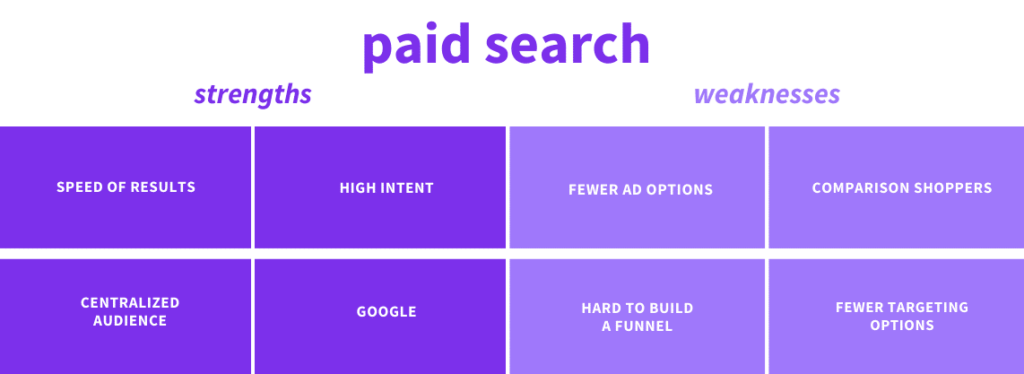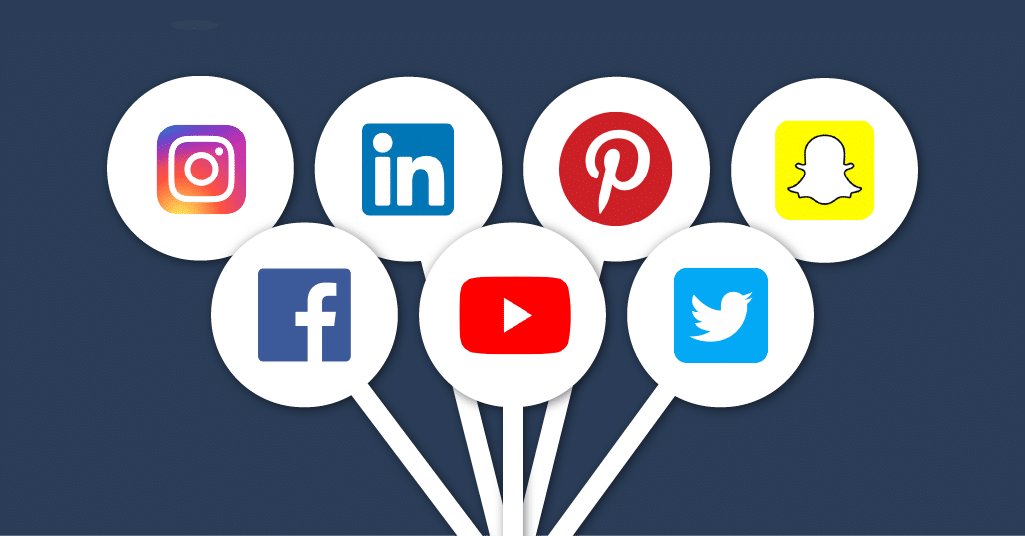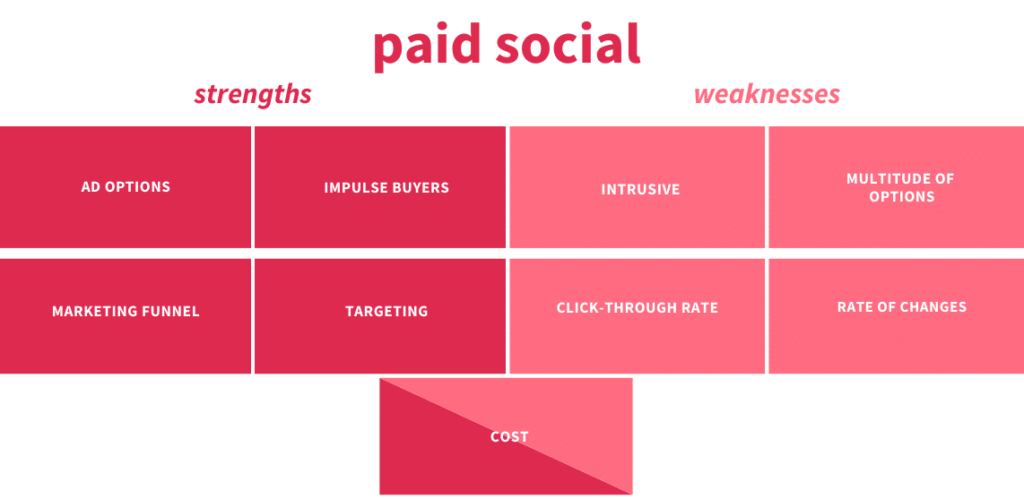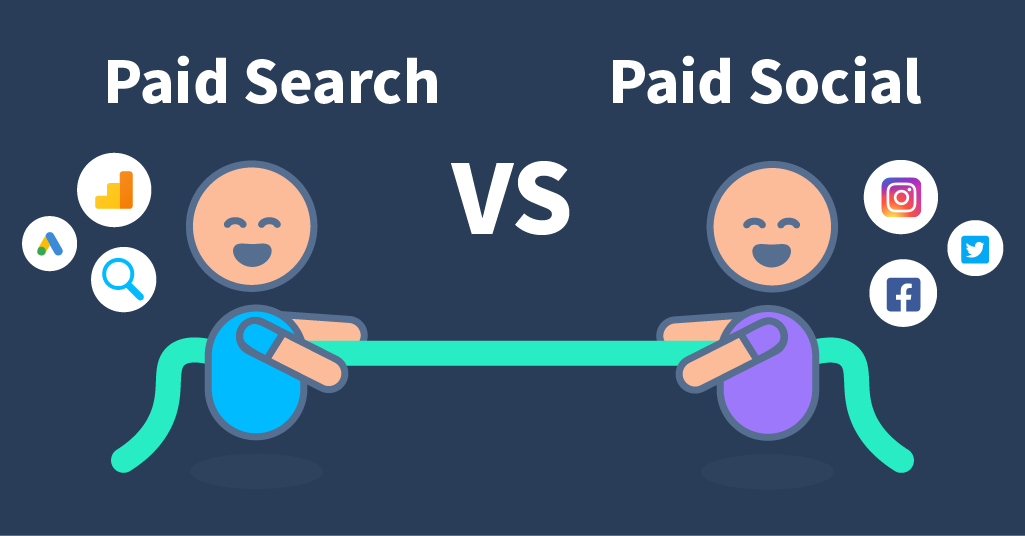Nobody has an unlimited advertising budget. Businesses can’t market everywhere all the time. That means you have to choose where to focus your time and money when it comes to creating winning marketing campaigns to sell your business’ products or services. So should your business focus on paid search or paid social campaigns?
The ideal answer is both, maybe in different amounts. It’s going to be different for every business based on what you’re selling, who you’re selling it to, and what your overall marketing strategy goals are.
Let’s take a look at what paid search and social actually are, and their strengths and weaknesses. Then you can decide what’s right for your business.
What is “Paid Search”?
“Paid search” marketing or advertising is when businesses pay to place ads on search engine results pages (SERPs). These ads relate to the query the user just searched for. It is usually contrasted with organic search, which is when a business works to lift their website’s unpaid ranking on SERPs.
Paid search is also referred to as PPC (pay per click), which is a type of ad where the business only pays for the ad once someone clicks on it. PPC ads are very common in paid search. It’s also sometimes called SEM (search engine marketing
Ads typically take up the first three results of a SERP, while organic websites make up the rest.
Both paid search traffic and organic search traffic are usually customers with high intention to buy; they’re very valuable for marketers to track in paid media reporting! If someone does a Google search for “best laptops 2020”, they’re often looking to purchase a new laptop soon, or right now!
Strengths and weaknesses of paid search ads
The main strengths of paid search are the speed with which you can get results, the high purchase intent of people seeing your ads, and the huge market share that Google claims, meaning most of your audience is in the one place (and, therefore, you only have to work in one ad platform).
Meanwhile, the weaknesses of paid search are the low number of ad format options, the lack of targeting especially when it comes to the funnel, and the tendency of search audiences towards being comparison shoppers rather than impulse buyers.

Strengths
- Speed. Paid search ads often deliver fast sales, especially when you’ve done keyword research to figure out which search terms your customers are looking for.
- High intent. When your ad ranks the best out of your competitors, your ad will often be the first thing people see when they decide to buy something online.
- Audience. Google’s market share in search engine queries is 86.6%. That means most searchers are using one platform, as opposed to social media.
- Google Ads. Formerly called Google AdWords, Google’s ad platform is where search ads were born, and Google offers both self-guided courses and on-call specialists to help you learn.
Weaknesses
- Ad options. Most search ads are text only. You can also deploy product listing ads and display ads, which can include images, but those are basically your only ad formats.
- Comparison shoppers. The nature of search means that people are seeing a lot of options for the same product. They can easily see you and your competitors side-by-side.
- The marketing funnel. Paid search is great for buyers ready to purchase, but you can’t easily reach people earlier in the journey.
- Targeting. Paid search has some basic options for audience targeting in terms of demographics and location, but nowhere near the range that paid social offers.
What is “Paid Social”?

“Paid social” marketing or advertising is when businesses pay to place ads on various social media platforms – Facebook, Instagram, Twitter, and many more.
Like paid search, paid social ads are usually contrasted with organic social media, which is when a business or brand posts on social media for free alongside everyone else’s social media posts.
Where paid search is sometimes called responsive advertising, because the customer is searching and the ads respond to the customers’ desires, paid social is more like intrusive advertising. Ads appear alongside and between ordinary content on peoples’ social media feeds, like television ads between segments of The Masked Singer.
Strengths and weaknesses of paid social
The main strengths of paid social are the wide variety of ad options and platforms, the low average cost of paid social media ads, and the tendency of social shoppers to impulse buy.
You can also implement the marketing funnel in paid social ads. That means using case studies, blog posts and more to generate increasing interest among targeted audience members.
On the other hand, the variety of options and the fast rate of change on each social media platform means paid social can get expensive quickly if you’re not paying attention. Social media ads have lower click-through rates than search ads, and they’re intrusive; many people don’t like them on principle.

Strengths
- Ad options. There is a wide variety of social media ad options available on every social media platform, from images to carousels to videos to immersive experiences.
- Impulse buying. People browsing on social media can discover things they didn’t know existed, or that they didn’t know they wanted.
- The marketing funnel. Paid social ads can be deployed in concert with each other to nudge people from not knowing you at all, to being loyal followers and brand advocates.
- Social media ad targeting. Interest and demographic targeting use everything a social media platform (like Facebook) knows about a person to deliver the most relevant ads to that person.
- Cost. Paid social ads often have pretty low CPC (cost per click) on average. Early funnel discovery results (impressions) are cheaper than late funnel conversion results (sales).
Weaknesses
- Intrusive. A lot of people don’t like ads on their social media feeds.
- Many platforms, many options. With so many social media platforms, it can be hard to know where your audience hangs out, and which ads they’ll like best of the many options you have.
- Cost. While paid social has a low average cost, ads can get expensive quickly if you have too many, or a disinterested audience, or irrelevant content.
- Click-through rate. Paid social has a low CTR; social media platforms prefer their users to stay on the platform, so your ads have to be stellar to beat the algorithm.
- Rate of change. Social media changes sometimes from one week to the next, so you have to always be looking out for updates.
What’s the difference between paid search and social?
In summary, paid search is responsive or reactive to a customer’s wants – like inbound marketing, where customers come to you. Meanwhile, paid social is proactive – you’re reaching out to your customer.
Sometimes people call this intrusive advertising, but there are ways to make it less intrusive. For example: creating ads that display natively and seamlessly on the page, or using ultra relevant targeting options.
Here’s a few more differences:
- Paid social works best to build relationships and generate interest in targeted customer audiences. Meanwhile, paid search is ideal for nabbing customers who know what they want and are ready to buy right now.
- Paid search is short term while paid social is long(er) term.
- Paid social is where to go for loads of ad options, including visual options, and paid search ads are mostly text.
Should you do paid search or social?

Ideally your business should advertise on both search engines and social media. That’s how you can capture your audience wherever they are in their purchase journey. But if you don’t have the budget or resources for that, and you have to choose, consider your business goals.
Do you want sales right now? Invest in search. Do you want to build your brand for long-term sales and loyalty? Social is the place for you. When in doubt, check out where your competitors are advertising and how. Then test to see if that works for you, too (look at paid media reporting metrics). Always test – results will differ for every business!
Hopefully this article gives you some idea about the differences between paid search and paid social. There’s a lot more to it than ‘Google vs Facebook’! If you have any questions about marketing strategy, pop into our support chat on the bottom right of your screen!


